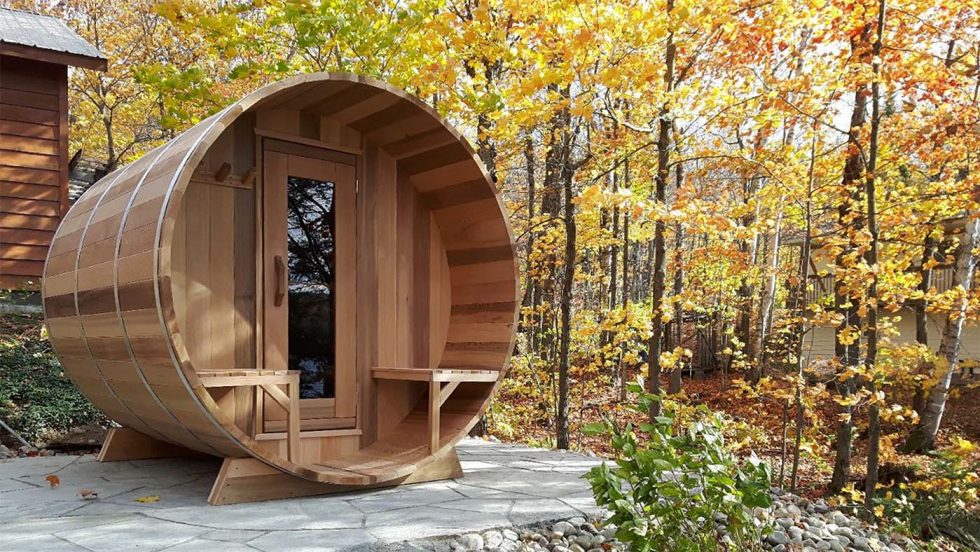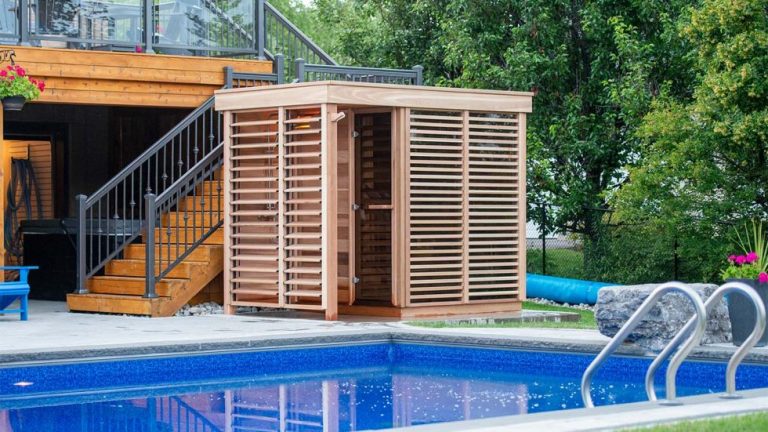Although saunas have been used for over 2000 years, their technology continues to progress. One of the latest innovations in sauna technology is the infrared sauna. Today, we will look at how infrared saunas compare to traditional saunas so you can better decide which one fits the needs of you and you family.
WHAT ARE TRADITIONAL SAUNAS?
A traditional Finnish style sauna is a wooden room or self-contained structure that uses either a wood stove or electric heater to heat up the interior of the space. Many of these traditional saunas also offer the option of increasing the humidity of the space by pouring water over special heated rocks; creating steam.
WHAT ARE INFRARED SAUNAS?
Infrared saunas (also known as far infrared or IR saunas) are wooden or plastic structures that use ceramic or carbon panels built into the walls of the structure to emit far-infrared light. This light is then absorbed by the body which experience it as radiant heat; causing the occupants to heat up and start sweating.
HOW DO TRADITIONAL & INFRARED SAUNAS DIFFER?
Heat & Use
Due to the higher temperatures that traditional saunas are able to create (with most people heating their sauna anywhere between 70 and 110 degrees Celsius), experts recommend staying in a traditional sauna for no more than 30 minutes at a time. After this 30 minutes, the sauna user can take a quick cold shower or plunge into a cold bath and repeat the process as many times as they’d like.
Infrared saunas are kept at a lower heat than traditional saunas; typically anywhere from 50 to 60 degrees Celsius. Sessions in infrared saunas are therefore usually much longer and milder than traditional saunas and don’t require “cool down” breaks every 30 minutes.
Traditional and infrared saunas also differ in how they heat. While traditional saunas heat the whole interior of the sauna; infrared saunas heat the occupants of the sauna while leaving the temperature of the interior of the sauna roughly the same.
Humidity
Traditional saunas allow you to control the humidity within the sauna by pouring water over special rocks that are heated by the sauna’s heater.
Although some infrared saunas offer steam generators as add-ons, most produce a dry heat. The effectiveness of the steam generators used in some infrared saunas has also been questioned by some sauna experts.
Studies
Quite a bit of research has been done in the last few decades with regards to the various health benefits of saunas. Most of these studies have exclusively focused on users of traditional saunas, however. For this reason it is still somewhat unclear how traditional and infrared saunas compare in terms of their health benefits, though there is some evidence to suggest that the higher heat and humidity found in traditional saunas does provide more benefit to their users.
Indoor vs outdoor use
Both traditional and infrared saunas can be used both indoor and outdoors with many sauna manufacturers offering different models that are specifically designed for one or the other. Traditional saunas are generally preferred for outdoor applications, especially for regions that experience colder weather. This is simply due to the amount of heat that traditional saunas can generate; which is generally far greater than infrared saunas.
For indoor applications both work well, though some customers prefer infrared saunas as they don’t heat up the rest of the house as much as a traditional sauna will.
Energy Requirements
If you are planning on installing your new sauna indoors, you should look into the power requirements of each sauna that you’re considering. Traditional saunas typically require more power than traditional saunas. Traditional saunas also require some time to heat up the space; while with infrared saunas the heat is fairly instantaneous.
Size
Traditional saunas come in a wide variety of sizes that can accommodate anywhere from 1-10 people. Infrared saunas are more limited in terms of sizing with their capacity typically limited to between 1-4 people.
WHICH IS RIGHT FOR YOU?
Both traditional and infrared saunas have their strengths and weaknesses. On the whole, we tend to give the edge to traditional saunas. Their proven health benefits, range of sizing and options, as well as their ability to be used outdoors year round makes them the superior option for many. There are some cases, however, where an infrared sauna might make more sense; especially for indoor installations where space is limited.
If you have any more questions about which type of sauna is right for you and your family, talk to one of our sauna experts today!



